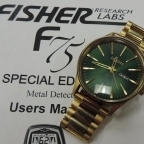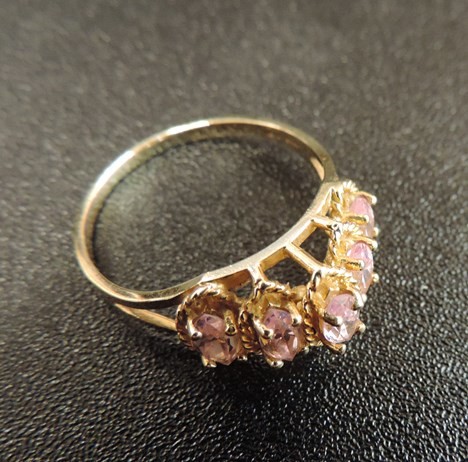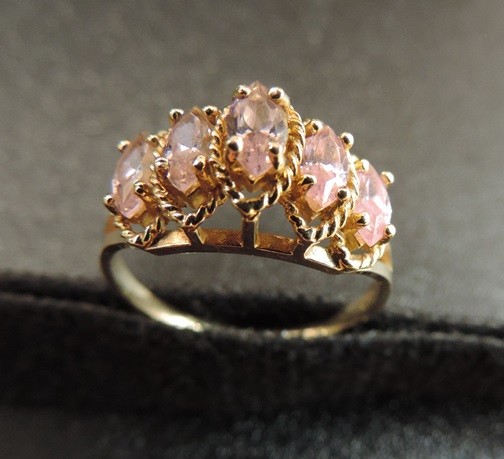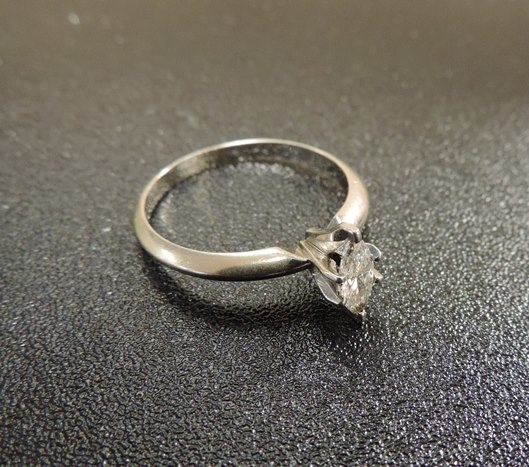-
Posts
616 -
Joined
-
Last visited
Content Type
Forums
Detector Prospector Home
Detector Database
Downloads
Everything posted by Mike Hillis
-
Hunting tiny gold jewelry in inland sites is just so different from mainstream detecting methods that unless you do it you don't understand the requirements. #1. EMI stability. Your detector has to be stone cold stable. No spurious noise. None. The signals you are after are small tight signals and you can’t hear them if your detector is making spurious noises. #2. The detector needs to be able to keep its HOTs at low gain/sensitivity settings because: a... You need to be able to focus on the right depth of signals and those tiny signals are not deep. Most of the time they are just down in the grass roots. You want to focus only on the top three to four inches of depth. If you have to run your sensitivity at or near max all you are doing is masking the desired signal response with reports from all the other signals surrounding it and below it. And in cases where the ground minerals are high, the ground itself will mask the response. b... You need to control the coil foot print. In this type of hunting you don’t want coil edge surface responses. You only want to hear what is directly under your coil. Concentric coils work better at this than DD coils. DD coils are ok but you get better footprints with concentric and tighter readings on your meter. #3. The higher the operating frequency, the more important the above become. As the operating frequency goes up, the level of discrimination goes down because the trash targets hit harder and sound better. In other words, the higher the operating frequency the better the trash sounds and responds. #4. Notch discrimination or some other form of discrimination that will allow you to focus just on the signal range you are hunting. The only range of signals you are interested in are in the ferrous/non-ferrous boundary range and the foil range up to maybe the nickel reading. All other signals are distractions. I'm editing to add a number #5. Tiny signal audio boost is a big plus if it can be deployed while keeping original signal response integrity. I'll close with this.....You can take a gold prospecting unit onto a woodchip playground or a sand pit and as long as it can handle the EMI you can hunt with it on normal settings. But if you are targeting sites where good quality, tiny jewelry is most likely to be present, you will be working a lot of turf sites where a prospecting detector's normal feature set isn't going to be very helpful. HH Mike
-

Makro Gold Kruzer First Look Videos
Mike Hillis replied to Steve Herschbach's topic in Nokta / Makro Metal Detectors
My apologies, George. I had mistakenly thought the video was yours. I won't post anymore on this thread. I'm sure the Gold Kruzer will be a good detector for most people. HH Mike -

Makro Gold Kruzer First Look Videos
Mike Hillis replied to Steve Herschbach's topic in Nokta / Makro Metal Detectors
I'm sorry, George, I had cancelled my preorder due to the extended wait time. After reading the manual and watching your video have no plans to obtain one. Micro/tiny/small jewelry hunting is pretty specialized. This one's Micro feature set seems designed for beach sand in low EMI environments. That is no help to me. My micro/tiny/small jewelry hunting is in more challenging conditions i.e. high EMI sites that include turf. I need a completely different feature set than what the Gold Kruzer offers. But I appreciate the effort to give the dry sand beach hunters something. HH Mike -

Makro Gold Kruzer First Look Videos
Mike Hillis replied to Steve Herschbach's topic in Nokta / Makro Metal Detectors
Thank you for the videos. Between those and the operating manual all my questions have been answered. HH Mike -

What Is On Your Wish List From White’s Electronics
Mike Hillis replied to Ridge Runner's topic in White's Metal Detectors
It would be great if I could select a Correlate Tone ID option on a V3i. Give me a high tone for anything above 10 points of correlation , a medium tone for 20 to 10 points of correlation, and a low tone for anything below 20 points of correlation. Would be even better if the high tone/mid tone correlation break point could be adjustable. While a correlation of 10 is good sometimes I like a little tighter window. Correlation is a fantastic feature on a multi frequency detector. I would really like to see more innovation in this area. HH Mike -

Inland Jewelry Hunting Tips
Mike Hillis replied to Mike Hillis's topic in Metal Detecting For Jewelry
Foreverteachable, I'm trying to figure out how best to answer the pull tab vs gold question. I don't dig many pull tabs myself so its a tough question. Not much gold in the pull tab range until you get up into square tabs. Maybe someone who digs a lot of pull tabs can answer the question. HH Mike -
Sweet! HH Mike
-
Hi Bado, In the wood chips I use the F75LTD with DST and the little 5x10" DD coil. HH Mike
-
This little beauty came out of another patch. This particular patch is an elementary school's wood chip playground that is adjacent to a park. I found my first gold ring ever there back in 2005. (I think it was 2005, might have been 2006 as I think it took me nearly 2 years to find my first gold ring). Over the years this patch has yielded some nice finds. It dried up after a while and I put it on a 6 month cycle. I found this ring there yesterday morning. 10k gold. About a size 7 I think. Ring is marked 10k and CZ so the stones are probably cubic-zirconia. Very pretty. My wife laid claim to this one for Mother's Day. HH Mike
-
That is a good book, too, and its fairly recent. Wait and see...it will help. HH Mike
-
Hi Dukester, If I say, "tot lots", what makes one tot lot better than another one? If I say, "basketball court", what makes one basketball court better than another one? If I say, "soccer field", what makes one soccer field better than another one? If I say, "park", what makes one park better than another?. If I say, "school playground", what makes one school playground better than another one? I had lousy luck hunting jewelry until I read Clive's "DFX Gold Methods" book. That turned on some lights and helped me a lot. If you want repeatable success you really have to read it. He puts you into the right mindset. The lights turn on, so to speak. He can help you find that first jewelry item. Once you find your first one or two items you are on your way..... Tip number 3 is the key....tip number three: Learn the loss characteristics of the items you find. Seek the answer to the question, “Why did I find what I found where I found it?” Once you think you have the answer, validate it by hunting other areas where that loss characteristic could be repeated and see if you find jewelry there. A validated loss characteristic is more valuable than the jewelry find itself. HH Mike
-
Patch Gold = A patch is a hot spot with the right ingredients (cover, clientele, and activity) to allow re-occurring jewelry losses over time. Patch Gold is gold jewelry found in this hot spot. This is nice piece of Patch Gold from one of my patches. 18k White gold with a very pretty diamond I found a few weeks back. HH Mike
-

Re-finishing And Cleaning Rings To Sell Over Melt
Mike Hillis replied to DukeBoxer's topic in Metal Detecting For Jewelry
Thanks for the great tip, Jackpine. I look at it this way; melt value is money in the hand, all else is pie in the sky. The "semi mount" sounds like it might make pie in the sky money a whole lot easier to get. HH Mike -
I just recently paid $600 for an great condition Etrac with 2 weeks of warranty left on it (basically three years old) and I thought I got a STEAL of a deal at that price. Felt like a bandit and still do. I find the Etrac to be an excellent metal detector. Already found 1 diamond engagement ring with it, which I'll post about later after I get the picture taken. Most are selling around $750 to $850. HH Mike
-

Why Dig Nickels?
Mike Hillis replied to Steve Herschbach's topic in Metal Detecting For Coins & Relics
I only dig nickels when they show up in the gold range. HH Mike -

New 61 Khz Makro Gold Kruzer
Mike Hillis replied to Steve Herschbach's topic in Nokta / Makro Metal Detectors
Cancelled my pre-order today. I've grown tired of waiting and there is other stuff I need to do that I've been putting off because of the Gold Kruzer. Once it does release, I'll take a look and if it looks good I'll fund it later in the year. But right now there are a couple of coils I need and I have two detectors that need trips to the factory (Tesoro and Whites). I'm just not big on waiting on something once I've decided to obtain it. The more I have to wait the less interested in it I become. HH Mike -

Inside Nokta & Makro Detectors
Mike Hillis replied to Nokta Detectors's topic in Nokta / Makro Metal Detectors
Pretty cool video. HH Mike -
EL Nino, My F75 has 7 different programs. Each one specialized. My V3 has two different multi-freq programs that let me see what the target looks like in all three frequencies it uses. I can zoom in and enhance it with one of the single frequency expanded looks or see what it looks like in various graph options. Further more I can make almost anything I can think up with it. Can't get more specialized than that. My new to me Etrac has a special little feature called trash density high setting that combined with a two dimensional grid discrimination feature seems almost like magic. From a pure discrimination standpoint, even my lowly Tek does better than the Equinox. So all this hype about obsoletion is bogus. HH Mike
-
I really don't see what all the fuss is about. The Equinox doesn't add any additional discrimination ability, it doesn't give more stable id, it doesn't go deeper than any of the other good units. It doesn't even look good. So I'm totally at loss as to the sudden attraction. The only thing I can figure out is that the marketing job was so good that people are just being swept up along even if they really aren't that interested in it. From where I stand, my F75LTD, V3, and new Etrac all outperform it for what I use them for. I'm sure I'm not alone in this sentiment, either. HH Mike
-

New - 6" Concentric For MX7 And MX Sport
Mike Hillis replied to tboykin's topic in White's Metal Detectors
Will it work with my V3? I saw a frequency range on the page from 3 to 22.5. Fingers crossed the answer is yes. HH Mike -

Your Thoughts: Best Pin Pointer?
Mike Hillis replied to TennesseeDigger's topic in Metal Detecting For Coins & Relics
I'm a Whites TRX fan, myself. I got a new Tek-Point last week but gotten to use it yet. Wife has me busy. It will most likely be the end of the month before I get to post anything about it. HH Mike




